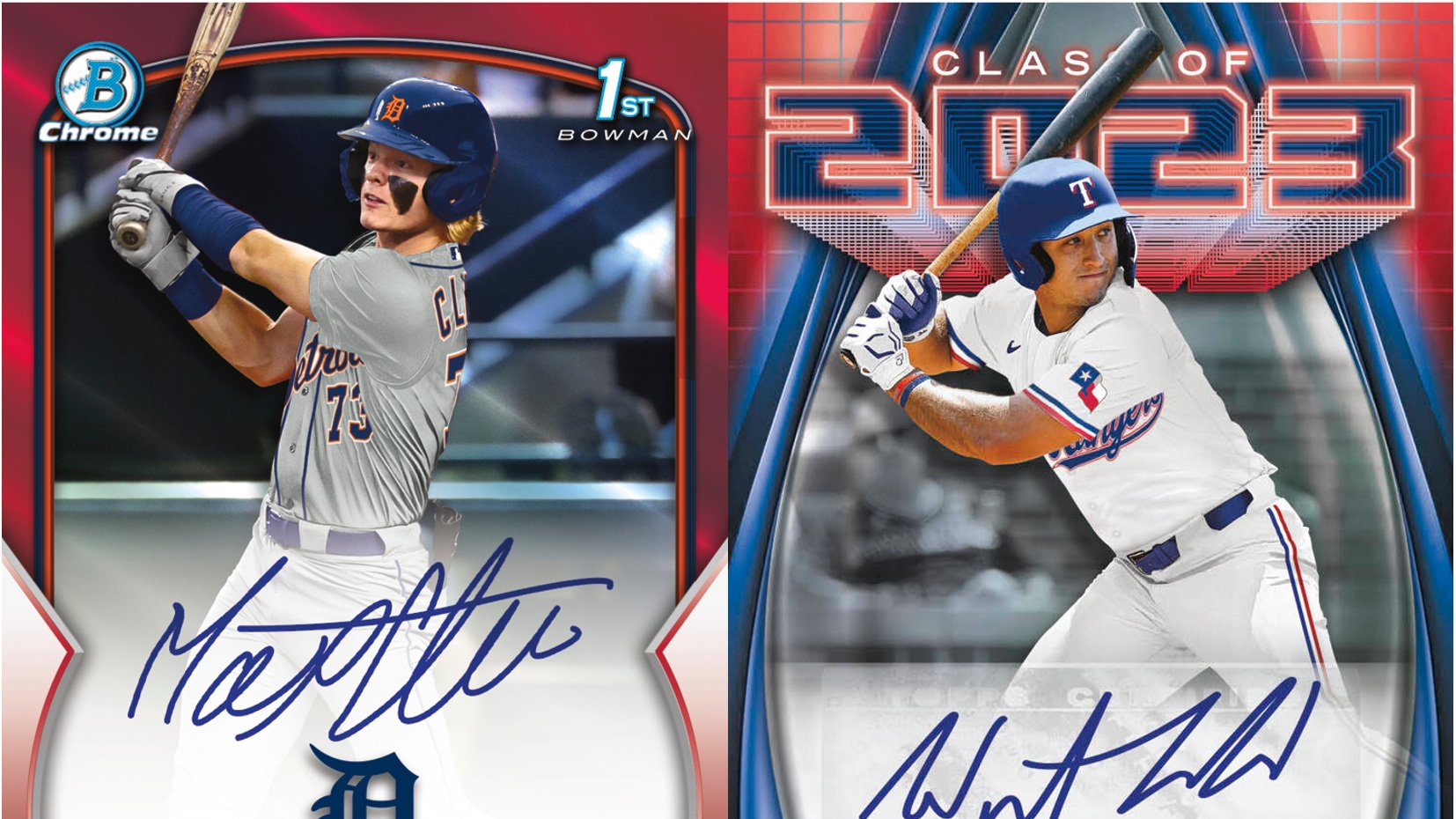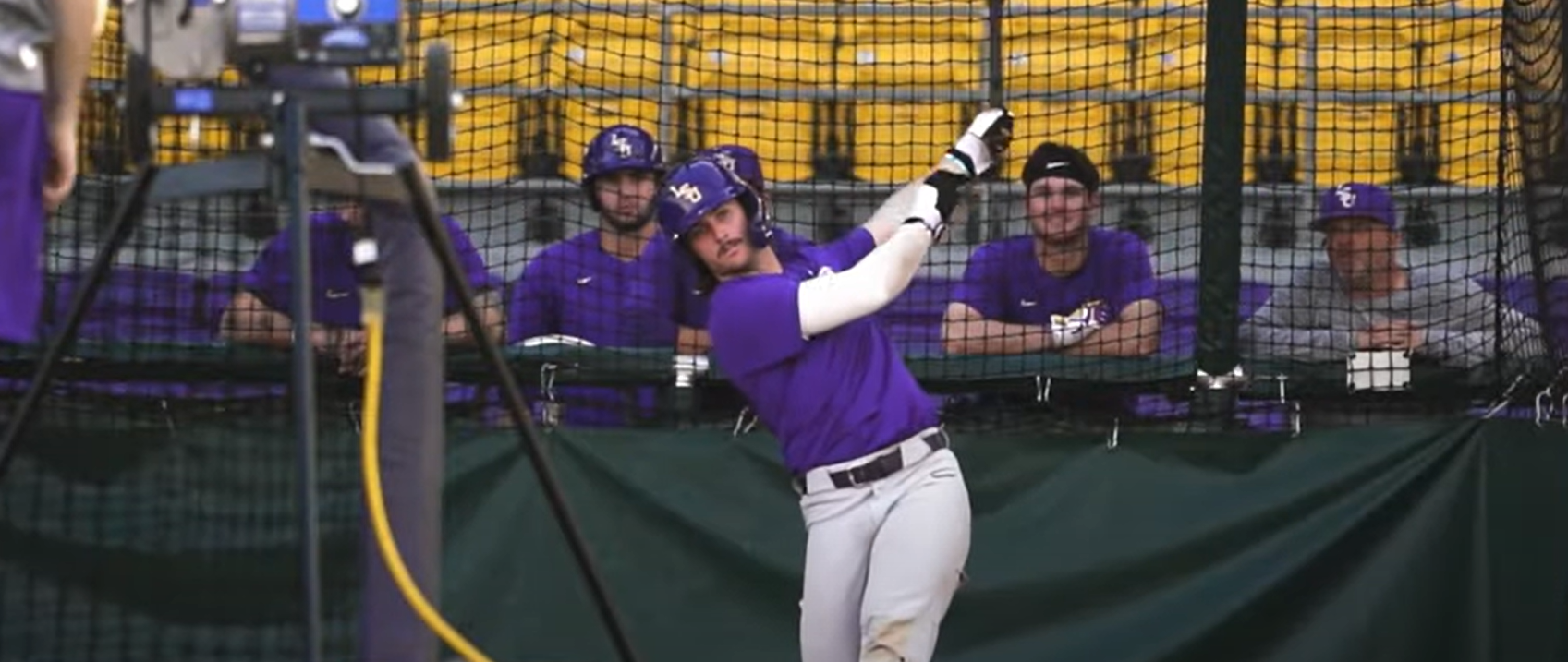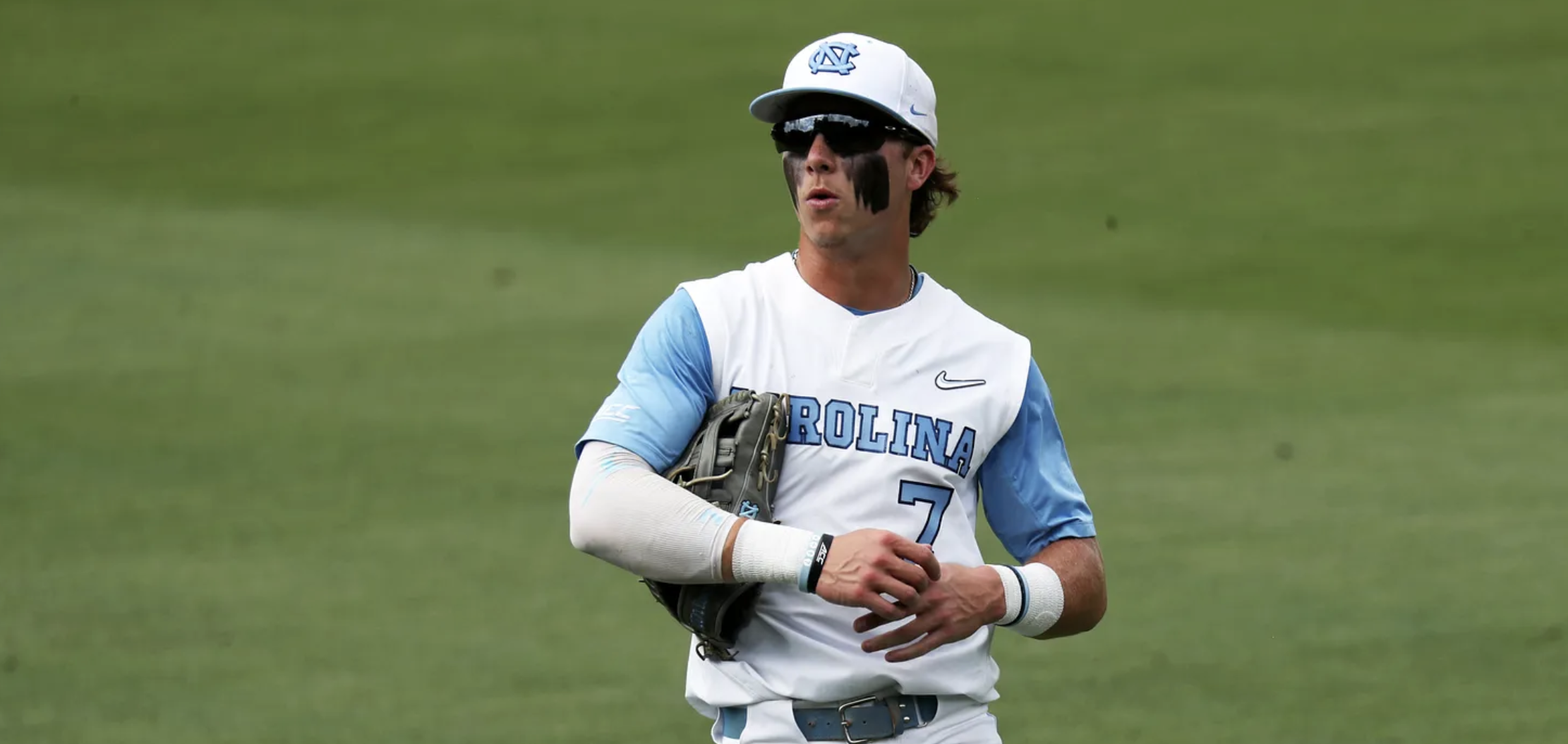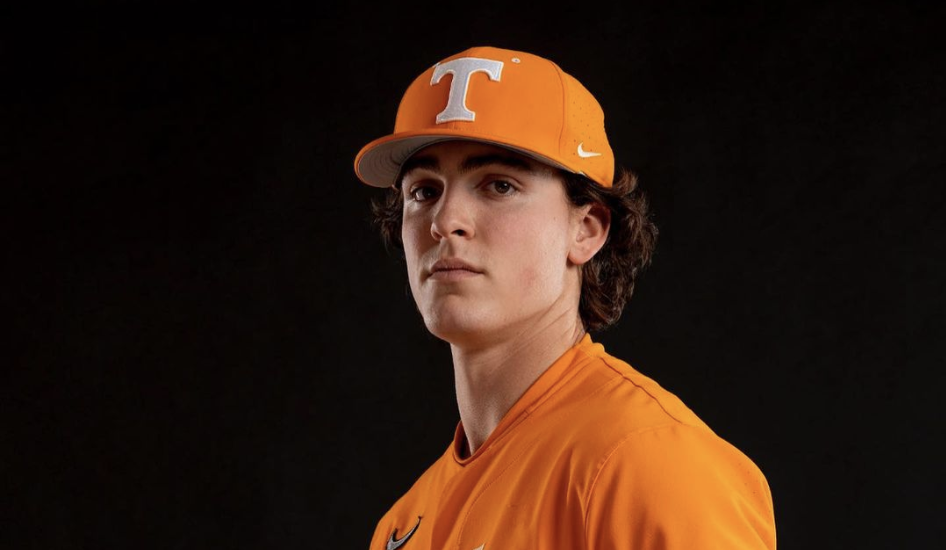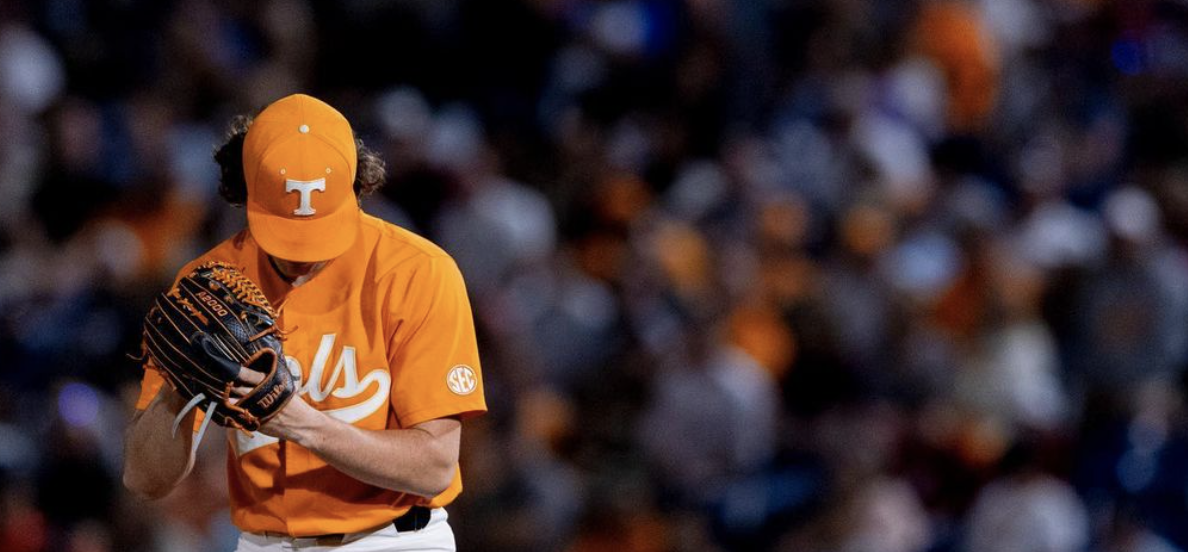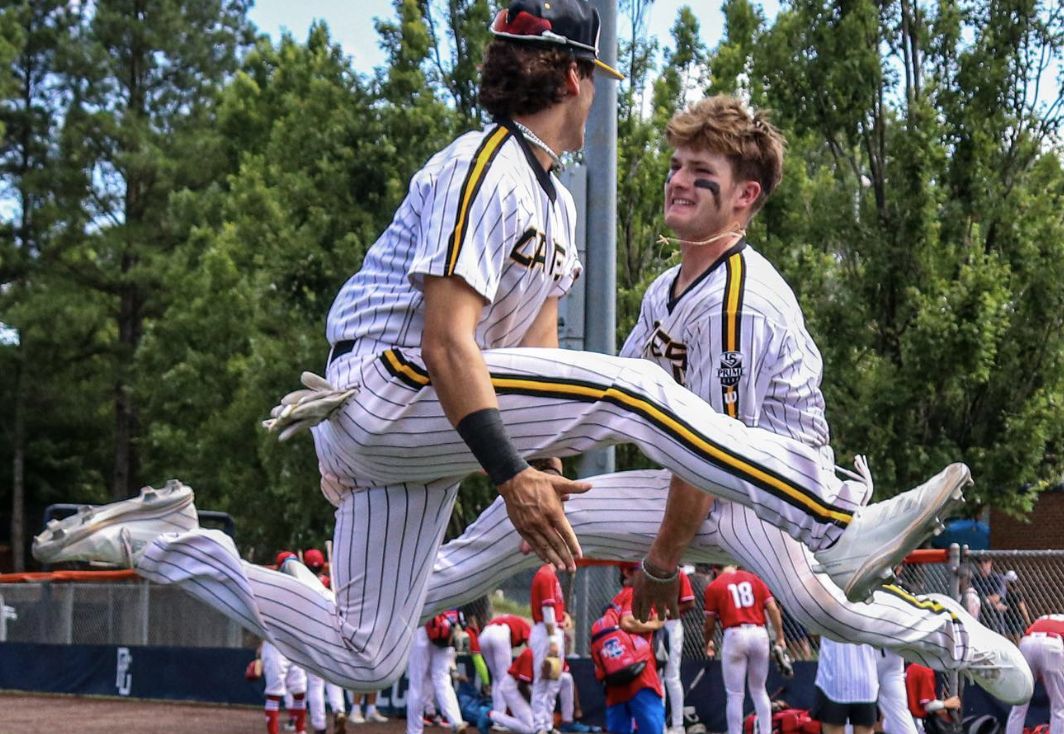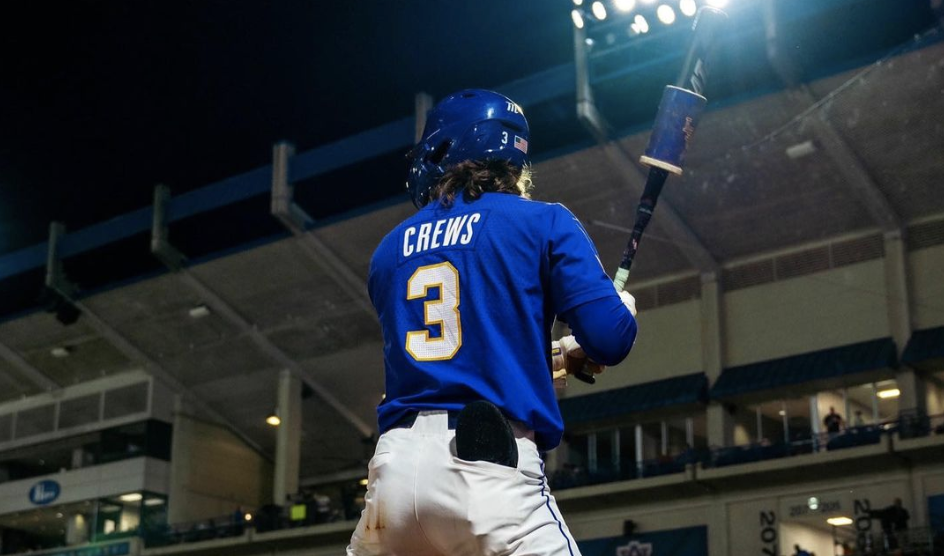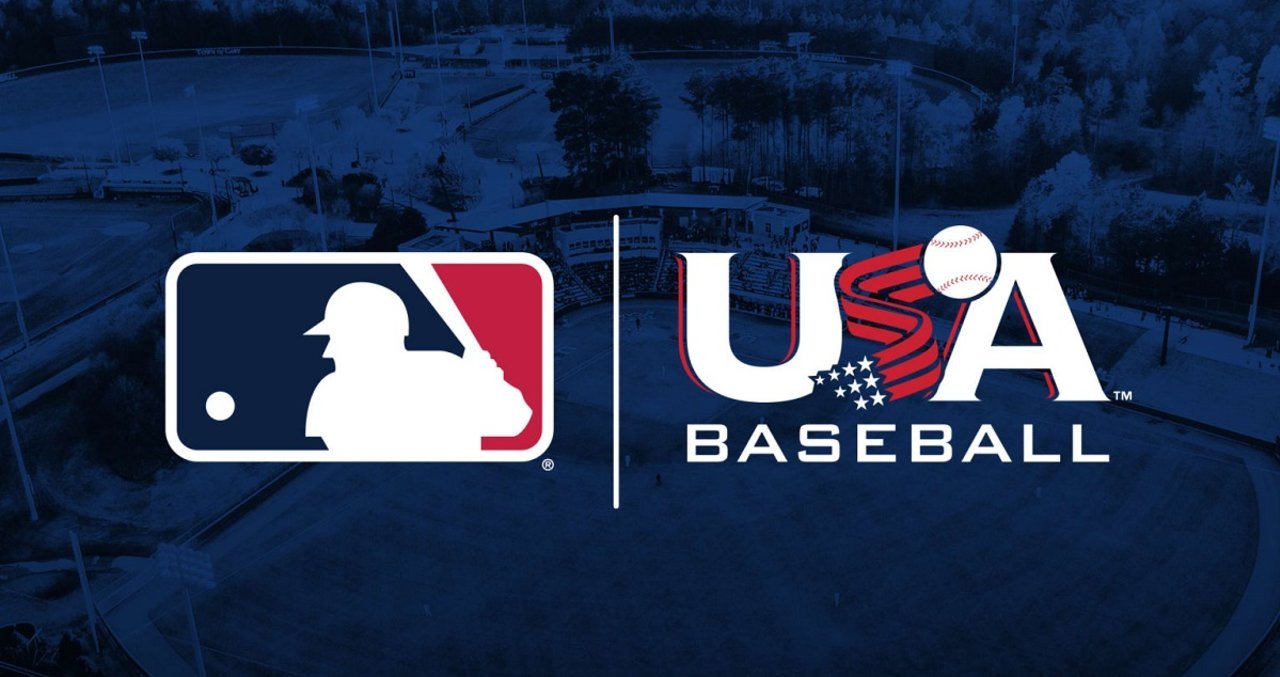The Kansas City Royals Top 20 Prospects
2023 Bowman Draft Preview
MLB Draft Day 1 Standouts/Winners
The first day of the MLB Draft has come and gone and man, what a night it was.
We saw plenty of history, including the first-ever teammates to go 1-2 in the draft, as well as the fewest amount of prep arms in the first round in quite some time. It was a relatively tame night, as well, as little chaos occurred, which is a change from what previous years have given us. But which classes and picks stand out the most from Day 1? That’s what I’m here to break down.
We’ll dive into six hauls and six individual picks that stood out and garnered my attention throughout the night, as well as give a bit of insight into what we could say on Day 2.
Best Team Hauls
San Francisco Giants
Picks: 1B/RHP Bryce Eldridge (16), SS Walker Martin (52), LHP Joe Whitman (69)
The Giants currently have the cream of the crop in terms of a haul this draft. Eldridge being selected as a two-way isn’t a shock, as that is likely the reason as to why he’s a first rounder to begin with. Unlike Crawford, I think Eldridge has a better chance to be a starter with the nature of his stuff, plus the bat is pretty underrated with plenty of power. He’ll be one interesting follow.
The Martin pick came as a bit of a shock admittedly, especially given the fact that he played with a back injury throughout the spring. However, I like the aggressiveness from the front office here. Martin’s bat is legit, as he’s got one of the better hit tools in the prep ranks, plus the power got better this spring. You can question where he fits defensively, he’s got the athleticism to start in the dirt with a move to a corner spot not out of the question. But the bat is the calling card here.
Lastly, Whitman is a phenomenal pick at 69. We thought he could find his way into the backend of the first and given the success the Giants pitching development team has seen the past few years, there’s plenty to like with Whitman’s profile. The fastball has potential, the slider is already a plus pitch, and the change-up is effective. The pick seems eerily similar to Carson Whisenhunt from a year ago.
Overall, it’s a pretty high risk, high reward class. I’m interested to see what the Giants do on Day 2, especially with under $10 million at their disposal in pool money. Maybe it’s a bit more of the college underslot demographic they go after, but I’d imagine Whitman may command a bit less and provide some savings.
Boston Red Sox
Picks: C Kyle Teel (14), SS Nazzan Zanetello (50)
If I were Boston, I’d of been incredibly giddy to have Kyle Teel fall into my lap like that. Teel was a consensus top-ten guy, even being the third-best collegiate bat on our board. It’s as legit of a bat as you can find in the country, winning the ACC Player of the Year and having a potentially plus hit tool with pretty robust power. He’s likely someone that will end up peppering the Green Monster in due time. While he isn’t your stereotypical catcher, he’s very athletic back there and deserves every chance to stick there. This could be an early candidate for the steal of the first round.
With Zanetello, you’re getting a freak athlete. He’s got legitimate five-tool potential in his profile. He’s hit everywhere he has gone and the mix of very quick hands/bat speed will give him a rather robust power profile once he’s physically mature. Let’s not forget the speed he has, which grades out as plus to potentially double-plus, and a very strong arm that has hit 98 MPH, and you’ve got a very solid prep player. He was drafted as a shortstop and he should be given every chance there, though I do believe he’s either a third baseman or a right fielder.
It might only be two picks, but I don’t think Boston could have done much better here.
Miami Marlins
Picks: RHP Noble Meyer (10), LHP Thomas White (35), OF Kemp Alderman (47)
Man, what the Marlins did with their first two picks was perfect.
We’ll start with Meyer, who was the lone prep arm to be selected in the first round. We’ll jump into this later on, but I absolutely love the fit here. He’s already got a robust pitch mix, but with the way the Marlins develop change-ups, it’s just such a fun idea to think about the potential here. With White, they double down on the prep demographic and they have the pool money to get him signed. White has long been a famous name and has excellent stuff, getting into the mid-90s with a lively heater and a robust secondary arsenal, though getting that delivery in sync and scattered command gave him some fits. The Marlins know their strengths here and I’m excited about it. There’s a ton of upside here.
Alderman is also a fun profile to dive into. He has some of the best power in the entire class, consistently having exit velocities get above the 110 MPH threshold. If Miami can get him to tone down the aggressive approach and improve the contact rates, there’s a ton to like with the bat. Defensively, he’s destined for a right field spot thanks to an absolute bazooka of a right arm.
Time will ultimately tell on how these guys develop, especially Meyer and White, but if I’m a Marlins fan, I couldn’t be any more excited about their picks.
Arizona Diamondbacks
Picks: INF Tommy Troy (12), INF LuJames “Gino” Groover III (48), LHP Caden Grice (64)
The Diamondbacks’ Day 1 class is insanely fun and screams upside, especially on the offensive front.
The selection of Troy was celebrated amongst the draft team here at the site. We think he’s one of the best bats in the class with a sound approach, robust power, as well as being able to handle velocity. He had zero whiffs against pitches above 95+ MPH in 2023, which while it is a smaller sample size, it’s quite impressive. Defensively, he might end up at second base, but I like the idea of starting him out on the left side of the infield. It’s a very fun profile.
Groover does provide a bit more questions regarding the defense, but there’s no questioning the offensive ability. Groover’s MO is hitting, utilizing the whole field with a short, compact swing and having excellent plate discipline. He managed to get more into his power in 2023 as well, which was very encouraging to see. He’s likely destined for either second base, first base, or even left field, but I’d imagine Arizona will let him man the hot corner for a bit.
Lastly, Grice being a P.O. is a fun pick. Arizona is quite progressive with their arms and while Grice does have 70-grade power, the hit tool was likely never going to materialize. He was very good down the stretch for Erik Bakich with a low-90s heater that has sink, as well as a solid breaking ball and change-up. He’s relatively fresh too, as he didn’t really pitch heavily until this season. I like the fit here.
Kansas city royals
Picks: C Blake Mitchell (8), RHP Blake Wolters (44), OF Carson Roccaforte (66)
Yes, you can scream at me all you want about the prep catching demographic and how risky it is, but at the end of the day, Mitchell felt like the one to buck that trend. It’s not often that you get someone of his caliber at the position and he’s viewed as reasonably safe offensively, as he has a robust hit/power combination. He won’t get a chance to pitch like he did in high school, but rather he’s going to stick behind the dish long-term. He’s athletic and agile back there, plus the cannon of an arm that he has garnered double-plus grades. There’s a ton to like with the profile he has and I’d be very interested to see the monetary figure he gets.
With Wolters, the Royals get a very solid arm. He came into his own this spring, turning into a legitimate power pitcher with a loud fastball that gets into the upper-90s with very solid life to it. The slider will need to be more consistent, but it flashes. At its best, it’ll be a power slider in the mid-80s with nasty bite and tilt, though it becomes a slurvy breaker with gradual break when he doesn’t execute. The change-up needs refinement, too. I do trust the Royals development team enough to work their magic here.
Lastly, Roccaforte is a fun pick in the second round. While the home run power wasn’t the same as what it was in 2022, Roccaforte’s batted ball profile is incredibly fun to dive into. It’s very easy power and while there’s some things to iron out with the swing, there’s a lot to like there. He’s an above-average runner that has a chance to stick at the eight with solid route running and great defense. He’s got high grades on models, too.
Detroit Tigers
Picks: OF Max Clark (3), INF Kevin McGonigle (37), INF Max Anderson (45)
Could this be a bit of a hot take? Maybe. It’s hard to pass up on a talented college bat in Wyatt Langford, but Max Clark is the kind of bat you feel comfortable passing on Langford for.
Clark’s offensive profile is a bit power limited when compared to the other names in the top five, he’s likely going to max out at average to above-average power when all is said and done. However, he’s a potentially plus hitter with a smooth left-handed swing that’s short to the ball and he can shoot the ball to all fields with ease, as well as having a pretty sound approach at the dish. What does give him the edge over someone like Walker Jenkins is the defensive upside here. He’s got a solid chance to stick in centerfield with very solid speed, route-running, and defense at the next level. Detroit did very well here.
McGonigle can be seen as a bit of a steal in the compensation round given the offensive upside and the first round grade we gave him. It’s pretty similar to what Clark’s bat is, a plus hitter with potentially above-average power when all is said and done. He has a lengthy track record of hitting everywhere he has gone and doesn’t strike out a ton against solid competition. If there’s anything to knock McGonigle on, it’s the fact that he’s likely limited to second base. He was drafted as a shortstop, but given the muscle he added and limited arm strength, a move seems likely down the line. But you can’t argue with an offensive-minded second baseman.
Lastly, Anderson had some helium in the last couple of weeks and felt destined to go higher than the ranking we gave him. Surely enough, here we are, as Anderson went 16 spots higher than our ranking. Anderson just flat-out hits, slashing .414/.461/.771 in the spring with Nebraska with very solid power output, particularly to the gaps. He does chase quite a bit and the walks aren’t where you’d want them to be, but he does a very good job of limiting the strikeouts. His defense is a question mark, though, given the lack of arm strength and range at second base. He’s likely a first baseman at the next level.
Honorable Mentions: Minnesota Twins, Cincinnati Reds, Tampa Bay Rays
favorite picks
Andrew Walters (no. 62/Cleveland)
I’ve seen a bit of scuttlebutt about Walters being a relief-only guy during his time at Miami, so I raise you this: he was one of the best closers in ACC history. Plus, given the electric nature of the fastball and the potential to move quickly as a bullpen ace in Cleveland’s system, I absolutely love the fit here. Walters has a unique fastball with a low release, flatter VAA, and excellent command. It was an incredibly dynamic pitch in college, and while you could say he’s a one-pitch pony, Walters has seen improvement in the breaking ball department, ditching the loopier curveball for a harder slider with solid bite. Cleveland’s pitching development is amazing, too. It’s hard not to love this pick.
Hurston Waldrep (No. 24/Braves)
Atlanta’s farm system is littered with a ton of arms, so why not add Waldrep to the fold? This feels like a steal given the nature of his stuff, particularly the off-speed, but I believe the Braves can be a development team that can fix his fastball. We already know how good the off-speed arsenal is, as the splitter is a legitimate 70-grade pitch and the curveball/slider are both above-average, but if Atlanta can fix his fastball command, this has the makings of another quick riser in that system. It’ll also help him live out his potential as a starter. If I’m Atlanta, I’m very happy that Waldrep fell this far.
Noble Meyer (No. 10/Marlins)
I know I’ve already touched on how much I like this pick and the upside, but it’s one of my favorite fits in the draft thus far. Miami knows how to develop pitching, there’s no question about that, and Meyer has one of the best pitch mixes in the class that’s led by his plus slider. But if there’s anything I’m excited about here, it’s the development of his change-up. We’ve covered it in Deep(er) Drives, but the one thing industry folks wanted to see was more change-up usage. Miami knows how to develop the pitch and given the fact that Meyer has already made some tweaks to the pitch over the past year, I like the potential here.
Colin Houck (NO. 32/Mets)
Houck sliding this far was not on my bingo card, especially given we had him mocked to the Diamondbacks at 12. Houck’s upside is tremendous and he’s incredibly athletic. It’s a very solid swing from the right side and with the projectable nature of his frame, the power potential is quite high. There’s also enough to suggest that he sticks at shortstop long term with his twitch, range, and arm strength. The Mets may have gotten a legitimate steal with their first pick here.
Chase Davis (no. 21/Cardinals)
Yeah, this was a match made in heaven. The Cardinals needed this kind of bat in their system and Davis fell right into their laps. He’s really evolved as a hitter in the past year, dropping the whiff and chase rates and shortening up the swing, all while keeping the robust power he’s always had. It’s likely that he gets a chance to start in center field, but in all likelihood, a move to a corner spot seems likely. I really, really like this fit.
Walker Jenkins (no. 5/Twins)
The Twins were big winners in the draft lottery back in December and they get someone who fits their M.O. perfectly. While the medical history pushed some teams away, the upside here is amazing. It’s a potential 60-hit/60-power bat with Jenkins, as he has robust bat speed and impressive bat-to-ball skills that you don’t find often in a prep bat. He’s likely a fit for right field instead of center moving forward, where his strong arm should play very well. He’s got the speed to handle center, but he likely outgrows the position. All in all, Minnesota likes their high-OBP and power guys and Jenkins fits that bill.
2023 MLB Draft: Top 500 Prospects - Final Update
2023 MLB Draft: Top 400 Prospects - May Update
The Seattle Mariners Have A Generational Opportunity In The 2023 MLB Draft
This article is brought to you by Tyson Tucker, one of the newest members of PL’s Draft Team
One of the main storylines taking place within the 2023 MLB Draft centers around Jerry Dipoto and his Seattle Mariners. The M’s hold three picks (22, 29, 30) in the top 30 of the draft, presenting a rare and massive opportunity. So rare in fact, that Dipoto says in his 24 years of working in the draft, he’s never been a part of something like it.
Dipoto shared some of his thoughts on Joe Doyle’s Overslot podcast, “To have three picks in the top-30 is exciting for us. Particularly excited because, frankly, this is an area of the draft that has been very productive for us. We feel like we’ve done very well in this general zone. The types of players that go off the board in the 20-30 range in the draft, are typically those that embody the criteria we hold in high value. We’re well situated to make these picks.”
He even went as far as to make a statement regarding a strategy they plan to employ. “We are likely to do something creative. We’ve tried hard to be creative in years where we’ve had a Comp B pick, but you need extra slot money to do anything…creative.” It’s clear the staff recognizes the opportunity at hand, expect them to be innovative with a freedom that isn’t typically afforded in this magnitude.
The instance is irregular in the fashion that the last time it did take place was back in 2016 when the Padres had the honor bestowed upon them. As we look back to those picks currently, San Diego walked away with two quality MLB starters. Albeit, both are no longer with the organization.
Quantrill helped land Mike Clevinger and Lauer brought over Trent Grisham and Zach Davies. Gone for the team but multiple guys who created immense organizational value. Which, in essence, is what the MLB Draft is all about.
It’s clear there’s a great opportunity at hand.
Picks and pool
One of the reasons this opportunity is so rare is because of how the M’s came to have these top picks. The first came through regular means. Pick No. 22 is their regular selection given their finish in the previous campaign.
The second came from an instance that is new to the MLB Draft. Seattle was awarded a pick at the end of the first round because of the new Prospect Promotion Incentive. Which is explained by the MLB in these terms, “If a player who was rated as a preseason Top 100 prospect by MLB Pipeline, Baseball America, and/or ESPN (at least two of the three) and was on his team's Opening Day roster goes on to win the Rookie of the Year Award, the club is awarded a Prospect Promotion Incentive pick after the first round.” Julio Rodriguez’ 2022 Rookie of the Year campaign fit the criteria and has been awarded to the Mariners immediately after the first round; Pick No. 29.
The third pick comes in the form of Competitive Balance Round A, dealt to teams with the smallest markets or revenue pools. The M’s found themselves with the first pick within the competitive balance round right behind their Prospect Promotion selection. And to make the case even more advantageous for Seattle, both picks got moved up two spots because of some other team’s big spending. Both the Mets and Dodgers first-round selections were moved back 10 spots because they exceeded the competitive balance tax threshold by over $40 million. So what would have been picks 31 & 32 turned into picks 29 & 30. A non-zero value move that gives the M’s another leg up.
What affords Dipoto the opportunity to get creative is the slot value allotment that comes with these high picks. And as of Tuesday April 4th, we now know what the slot values and bonus pools will be for the 2023 MLB Draft. It’s more than fair to say the Mariners are well situated.
Here’s the Top 10 courtesy of MLB.com:
Pittsburgh Pirates - $16,185,700
Detroit Tigers - $15,747,200
Washington Nationals - $14,502,400
Minnesota Twins - $14,345,600
Oakland Athletics - $14,255,600
Cincinnati Reds - $13,785,200
Seattle Mariners - $13,170,900
Miami Marlins - $12,829,600
Kansas City Royals - $12,313,500
Colorado Rockies - $11,909,800
Other than the Mariners, who check in at #7, every team on that list holds a pick within the Top 10 of the draft. And as we know the M’s first pick is outside the top-20. As far as the total bonus pools, the Mariners’ top 3 pick values combine to be $9,029,800; which is more than 12 teams’ total pool. You’ve heard me say it a couple times, but the opportunity at hand is nearly unprecedented. In large part thanks to the ever-rising slot values. The M’s hold the cards in the back half of the first round.
So, where do they go?
To know where they might go in 2023 we must look back to where they’ve gone previously under Jerry Dipoto & Scott Hunter.
They’ve nearly done it all since Dipoto took the reins in 2016. First it was college bats, then it was college arms, and in the last two years, it’s been high school bats. It’s fair to say they really don’t have a first round “type.” They identify the guy they deem fits their needs best for the given situation and run with it. To make an educated guess on a player they might draft would mostly be a shot in the dark. Dipoto and Co. are going to play the role of a wild card on draft night, but we can identify options they may have presented to them.
Scenario 1:
They float down prep. Blake Mitchell is a premium high-school catcher who can really swing it, while also being up to 97 MPH on the bump, so you know the arm strength is there. It’s solid athleticism and great makeup on an up-the-middle player. All these factors fit the mold of what the M’s have done with recent prep picks but also make him likely to go off the board in the area of the 15th pick. On the off chance Mitchell is still available around 17th or 18th, I think you see the M’s make some promises on the dollar amount they can match going overslot on pick No. 22.
With the two remaining selections I think you see a team that realizes a window opening up on the Major League side of things and looks to supplement that. Colton Ledbetter and Juaron Watts-Brown are players that are performing at power conferences within college baseball and could be semi-quick movers. Both of which should require slot or less at their draft position. College arms will be a mainstay of these scenarios because the organization has shown they have a pitching infrastructure they fully believe in. Expect a college arm to be one of the selections especially with the depth of that crop in this class.
Scenario 2:
In this scenario, they catch a falling prep. As I mentioned above, this is a team that has a window opening at the major league level for the first time in decades. They’ll look to grab some college players who can move fast. So in this scenario, they go grab Tommy Troy, a versatile, athletic do-it-all type of up-the-middle player. A true hitter who brings more than that to the table.
After that, they nab a premium prep hitter in Aidan Miller. Miller missed a portion of his high school season with a broken hamate bone in his hand. Before the injury, Miller was a fringe top-10 prospect. He’s even likely just a tier below consensus top-10 players in Max Clark and Walker Jenkins. Miller is committed to Arkansas and could get close to honoring his commitment unless a team like the Mariners can catch him at this position. It wouldn’t be the first time they nabbed a big-bodied 3B after grabbing Tyler Locklear and Tyler Keenan in recent years. It’s not an up-the-middle player, but we’ve heard their staff say they can afford to take on more risk this year. Miller fits the mold.
Going over-slot to nab Miller at No. 29, requires them to go just a touch under-slot at No. 30 with Alabama LHP Grayson Hitt. Hitt is a projectible guy who has more recently tapped into his ceiling. Dipoto and staff have not been shy about getting arms in which they have identified deficiencies through biomechanical means. Knowing in turn they can make the necessary adjustments to tap into more. They get their college arm here and it’s an arm they believe they can mold into future value.
conclusion
When it comes time to turn in the card(s) this July, it’s hard to know where the Mariners will go. We can presume they’ll want to stick to their typical high-character, middle of the diamond, impact player. Odds are they will also nab a college arm to supplement the infrastructure they’ve built out as an organization. Above all else, as we’ve heard them say, expect some creativity.
When you have tenured GMs and scouting directors making remarks about never experiencing an opportunity like this in their career or even franchise history, it’s easy to understand the weight of the situation. And while three picks in the top-30 adds a little pressure, it also affords a ton of freedom and opportunity. Both of which the higher ups in Seattle are relishing as we speak.
It will all come to fruition on Sunday, July 9th during MLB All-Star Week. Which happens to be where you ask? Seattle. A draft being held in Seattle, in which the hometown team will hold the cards for much of the latter half of the first round. The stars are aligning for what figures to be…
A generational opportunity.
2023 MLB Draft - Top 400 Prospects
A new year, a new board and new ranks. The Top 300 is here. With the summer showcase circuit behind us and college fall ball in the rearview mirror, we’re ready to re-rank the 2023 draft class. Our team has taken in 9 showcase tournaments and been closely monitoring fall scrimmages. We’ve collected data and pitch metrics from guys showcasing their summer gains and, boy, do things look promising. Some guys are breaking out.
2023 MLB Draft - Top 300 Prospects
A new year, a new board and new ranks. The Top 300 is here. With the summer showcase circuit behind us and college fall ball in the rearview mirror, we’re ready to re-rank the 2023 draft class. Our team has taken in 9 showcase tournaments and been closely monitoring fall scrimmages. We’ve collected data and pitch metrics from guys showcasing their summer gains and, boy, do things look promising. Some guys are breaking out.
2024 MLB Draft - Top 100 Prospects
2024 MLB Draft - Top 100 College Prospects
2024 MLB Draft - Top 50 High School Prospects
2023 MLB Draft - Top 200 Prospects
A new year, a new board and new ranks. With the summer showcase circuit behind us and college fall ball in full swing, we’re ready to re-rank the 2023 draft class. Our team has taken in 9 showcase tournaments and been closely monitoring fall scrimmages. Some guys are breaking out. As always, our boards are built on three pillars:
East Coast Pro Notebook #2: Mariners and Giants
During the first week of August, I headed west on I-20 to cover the East Coast Pro Showcase in Hoover, Alabama. The following is the first of three sets of notes from that event, with this one covering the Mariners (Mid South + Gulf Coast) and Giants (Central and South Florida) squads that competed all week at the Hoover Met. Let’s get into it!
2023 MLB Draft - Top 150 Prospects
2023 MLB Draft - Top 100 High School Prospects
A new year, a new board and new ranks. With Prospect Development Pipeline and the Perfect Game National Showcase in the books, we’re prepared to release our Top 100 prospect. These will shift in the coming months after Area Code Games, East Coast Pro and World Wood Bat Championships, but we’re feeling pretty good about where things currently lay.
2023 MLB Draft - Top 100 College Prospects
Live Looks: PDP Edition
We’ve finally reached draft week for the 2022 class, which means we will finally be able to dive deep into the 2023 class in short order. But, with the overlap between the classes, we’ve gotten a head-start, as the PDP League ran through the holiday weekend.
100 of the top prep players in the country flocked to Cary, North Carolina for a week-long four team series in front of a plethora of scouts to display their skillsets and tools as their summer circuit is in full gear. In this piece, I’ll cover twelve players who performed well throughout the week, including some lower ranked players who could see a bump in their stock as the summer continues.
INF Kevin McGonigle, Monsignor Bonner (PA) HS
You are more than likely looking at the best hit tool in this prep class in McGonigle. He’s got a smaller frame with some strength to it at 5’11”, 185 pounds and has plenty of athleticism and twitch, as well.
He attacks early in the count and often, recording multiple first pitch singles throughout the week, including three in his first game of the week. He stays short to the ball and has incredible bat speed and does not miss the barrel often. He’s also got some pop to his bat, showcasing good power in batting practice, as well. He has the makings of a potential plus hitter moving forward. In the field, he’s as smooth as they come. A fluid defender up the middle, McGonigle has good range and a solid arm and likely profiles at shortstop as he gets older. All in all, it’s an enticing package of tools that should allow the Auburn commit to hear his name called early next summer.
RHP Noble Meyer, Jesuit (OR) HS
I had a hard time debating about who had the best pitching performances throughout the week, but ultimately, I settled for Oregon’s Noble Meyer. Hailing from the same school as 2020 first rounder Mick Abel, Meyer displayed excellent stuff throughout the week.
Meyer has the stereotypical projectable body type, long limbs attached to a slender frame at 6’5”, 195 pounds. He throws from a near side-arm slot and has a quick right arm from a relatively effortless delivery. In his first outing, Meyer sat in the 90-94 MPH range with the fastball, showcasing good life up in the zone, pairing it with a sweepy, high-spin slider in the low-mid 80’s and a change-up with depth. However, the second outing of the week proved to be the head-turner. Meyer topped out at 98 MPH, sitting 95-97 MPH with the same life on the fastball, excellent late biting sweep on the slider in the 84-88 MPH, and the change-up was in the mid-80’s, as well. Meyer’s control and command were solid, too. All in all, the week Meyer had brought a glimpse as to what he is capable of in the future, and if there’s more outings like that, expect the Oregon recruit to rise quickly in this draft class.
RHP Travis Sykora, Round Rock (TX) HS
Sykora likely will slot in as the best right-handed prep pitcher in this class once all is said and done. At 6’6”, 220 pounds, he has quite a bit of projection remaining to his strong frame and utilizes a rock-and-fire delivery with good hip/shoulder separation. Oh, and the stuff is pretty loud, as well.
He’s touched 99 MPH in the past with his heater, though on this day, Sykora was primarily 93-96 MPH and topped out at 97 MPH with late life that is tough to pick up out of the hand. Sykora does a great job of hiding the ball throughout his delivery, with it only becoming visible as his arm stroke comes around with the shoulders. He utilizes a tight-spinning slider with bite in the mid-80’s that has good depth to it and a split-change with tumbling action and sits in the mid-80’s. He’s able to tunnel those pitches well from a three-quarters arm slot and has good feel/command of all three. There’s a lot of upside to tap into here and the Texas recruit has a bright future ahead of him.
OF Kendall George, Atascocita (TX) HS
“Speed….I am speed. - Lightning McQueen” - Kendall George…..probably.
George follows the same type of mold as Georgia Tech infielder Chandler Simpson. There’s not that much power to George’s game, he’s mainly a slap hitter that produces line drives to all fields and will use his speed to his advantage with bunts on a regular basis. Defenses will be rushed when he is running down the line, as he clocked numerous sub-4.00 times on his home-to-first runs throughout the week. His speed allows him to track balls in centerfield with ease, as well. He’s the kind of top-of-the-order threat that teams have nightmares about. George is committed to play at Arkansas.
RHP Charlee Soto, Reborn Christian Academy (FL)
Charlee Soto has really implemented himself as a standout arm in this prep pitching class, as he’s got an insane amount of upside to tap into. Being young for the class (Soto will be 17 on draft day in 2023), Soto brings about a very projectable frame, plenty of athleticism, and an electric arm to the table for scouts to enjoy.
Soto has an easy delivery, utilizing a three-quarters arm slot with a short arm stroke and hides the ball well. While there’s some violence at release, Soto has electric arm speed and does an excellent job of separating his hips/shoulders on the mound. There’s some times where he can be erratic with throwing strikes, but he’s gotten up to 98 MPH with the fastball, usually sitting in the 92-96 MPH range with serious late life and run. He primarily used a tumbling change-up that he commanded away from lefties well in the mid-80’s, as well as using a short-biting slider in the 86-88 MPH range mainly against righties. It would not shock me to see Soto go relatively early next summer in the draft. He is committed to UCF.
LHP Thomas White, Phillips Academy (MA)
White has been long heralded as the top prep arm in the 2023 class and it’s not hard to see why he’s had that title attached to his name. The stuff itself plays very well, even if there’s some questions marks that I have after viewing him twice at PDP.
White’s fastball got upwards of 96 MPH, sitting in the 90-94 MPH range in both outings with good life up in the zone and almost exclusively pitched off of it. He did have a tendency to miss arm-side and up in the zone, likely due to his delivery not being in-sync. His delivery is relatively easy, but it’s a long arm stroke and there’s times where he struggles to get on time. He did begin to throw his mid-70’s curveball more often as the outings progressed, a high-spin breaker with nasty sweep and bite that lefties had trouble touching. He flashed a change-up with good separation to the fastball and had hard diving action to it, which was saved primarily for righties. The package and arsenal are there for White to be a top name, now it’s just a matter of ironing out his delivery issues and improving the control and command.
OF Walker Jenkins, South Brunswick (NC) HS
While I have an extremely large urge to make a “Walker, Texas Ranger” pun here, I’ll just dive right in about how much I enjoyed Jenkins at PDP this week.
Jenkins has a strong, physical frame with plenty of athleticism and room to add muscle, as well. He’s every part of a top tier prep outfielder, as well. There’s plenty of bat speed and power in the stick, showcasing all fields power and utilizing the gaps often. He did have five strikeouts to zero walks, but he’s shown good patience and strike zone awareness in the past. The speed certainly stands out, as well. He can turn on the burners when the ball hits the gap, gliding around the bases with ease and solid home-to-first times. This helps him in center field with his range, though he likely profiles more in a corner outfield spot with a strong arm and very solid defense. The UNC commit will be a very fun profile to cover as we inch closer to his draft day.
INF Colt Emerson, John Glenn (OH) HS
Emerson was one of the best bats at the entire event, hitting a pair of triples amongst the six hits that he tallied throughout the week. The Ohio native is, like Soto, one of the youngest players in this class, as he won’t be turning 17 until just after this year’s draft.
Emerson is long and lean with projection to the frame to add weight and long levers. He’s a tough out at the plate, as he stays short to the ball with some bat speed and covers the plate well against fastballs and breaking balls. He’ll utilize gap-to-gap power and has average speed on the basepaths. In the field, he’s a smooth defender at shortstop currently, with good range and a decent arm. However, he likely profiles better at second base moving forward. He has the profile of a hit-over-power player that can play a respectable second base for a team in the future. Emerson is committed to Auburn.
RHP Cameron Tilly, Castle (IN) HS
We are covering the Auburn recruiting class very well in this piece.
Tilly is another Tiger commit that raised his stock at the event. He only had one outing throughout the week, where he sat 88-91 MPH on the fastball and topped out at 92 MPH. He was pumping strikes early, getting some whiffs up in the zone with some decent ride to the pitch. However, the star of the show was his slider. It’s a high-70’s/low-80’s offering with two-plane break that has the potential of a legit out pitch. It has serious late bite that hitters struggled against and had high spin rates, getting upwards of 3,000 RPM’s on occasion. He flashed a splitter, but it lags behind the fastball/slider combo. The lone mistake he made throughout the outing was leaving a hanging slider to Riley Jackson, who promptly launched it over the left field fence for a home run. He’s one to keep an eye on throughout this cycle, especially if he can add some velocity.
RHP/DH Bryce Eldridge, James Madison (VA) HS
Eldridge enters the cycle as one of the best two-way prospects in the class. He’s a long, lanky specimen with plenty of projection, coming in at 6’7”, 220 pounds.
On the mound, Eldridge got up to 95 MPH, ranging from 91-94 MPH with the heater with some late life to it. His breaking ball has two different forms, a high-70’s curveball with big depth and a more lateral slider in the low-80’s with average spin rates. They can morph at times, but he’ll predominantly throw the curveball as it flashes better than the slider. He has feel for a solid change-up, as well. He’s got plenty of power potential at the dish, using all fields and even recorded an opposite field double in a pinch-hitting appearance. There’s a solid chance he goes high in this class with the stuff and the frame. He’s committed to Alabama.
LHP Hunter Dietz, Calvary Christian Academy (FL)
The brother of 2021 prep pitcher Tyler Dietz, Hunter Dietz had one of the best pitching lines of the week, striking out seven and walking none across two outings.
He’s got a large, imposing frame at 6’6”, 230 pounds with great pitch-ability. The fastball sat in the low-90’s with heavy bore inside, reaching back for 95 MPH multiple times. He’d pitch backwards off a hard breaking slider in the low-80’s to set up the heater, as well as getting some ugly swings from both sides of the plate. He’d flash a firm change-up at times, but he really found success with the fastball/slider combo throughout. He pumped plenty of strikes, as well. He’s currently committed to play at South Florida and likely could be a potential sleeper in this class.
INF Camden Kozeal, Millard South (NE) HS
It’s not too often that you find a prep hitter that has a stan account, but alas here we are.
The Nebraska native showed out at PDP, batting .500 across the event with a home run. He put together plenty of competitive at-bats, utilizing all fields at the plate with good zone coverage. There’s some projection remaining to his frame, with present strength and has solid pop to all fields, taking Zander Mueth deep to the opposite field on a hanging slider that caught too much of the plate. He also had exit velocities that got up to 103 MPH, as well. He ranged well at shortstop, showcasing a good arm and soft hands, though he likely moves to second base in the future. A Vanderbilt commit, Kozeal will definitely reap the rewards of a solid week in Cary as the summer continues.
Honorable Mentions: Max Clark (IN), Eric Bitonti (CA), Jonny Farmelo (VA), Justin LeGuernic (NY), Brandon Winokur (CA), Cameron Johnson (MD), Blake Mitchell (TX), Jake Brown (LA), Andrew Wiggins (IN), Blake Dickerson (VA)
25 Premier 2023 MLB Draft Preps Announced as PDP Invitees
As we await the start of the spring season, USA Baseball and Major League Baseball announced the initial 25 players that will participate in this year’s Prospect Development Pipeline League. This year’s event will return to the USA Baseball Training Complex, located in Cary, North Carolina, from June 29th-July 6th.






